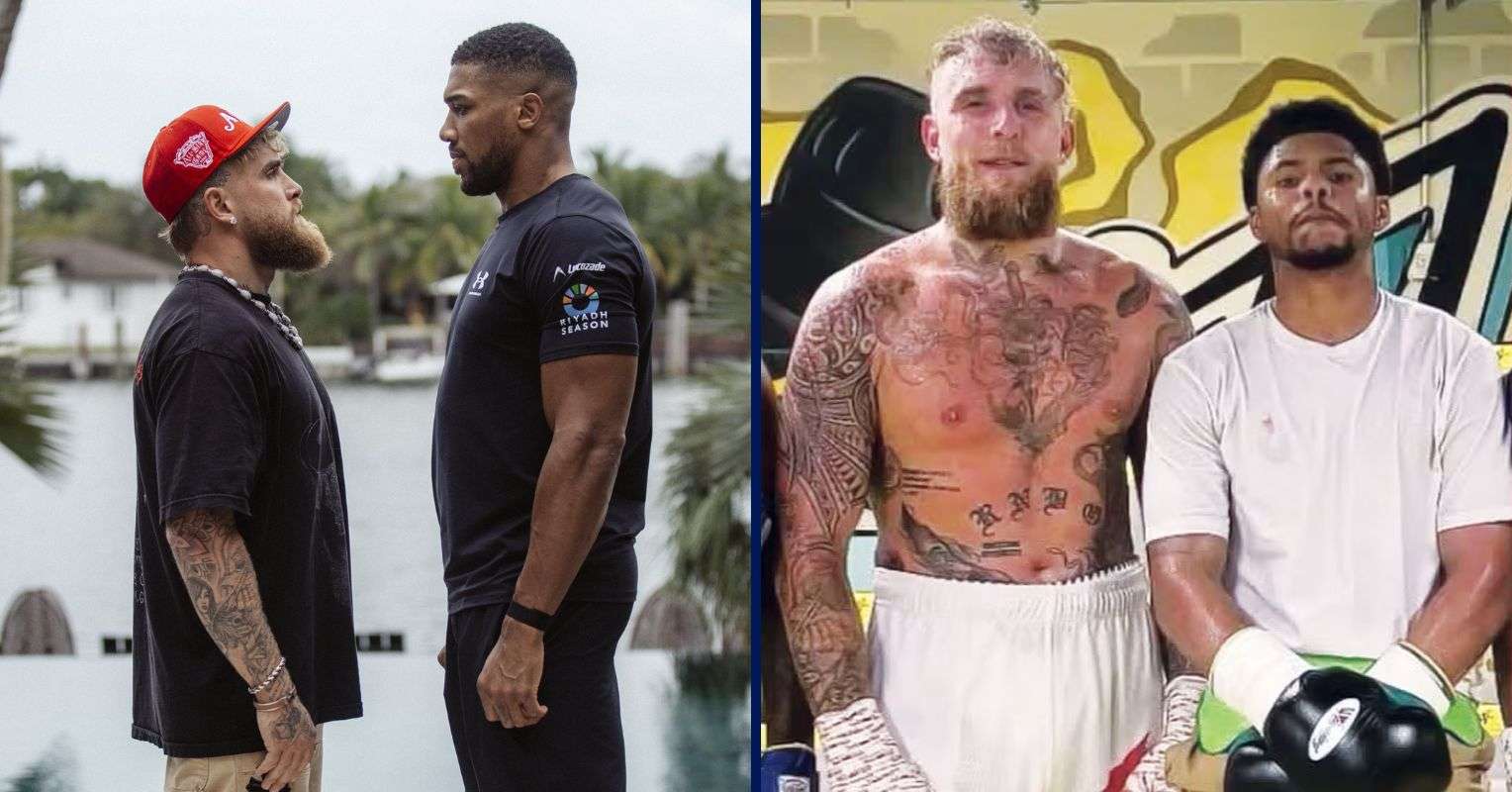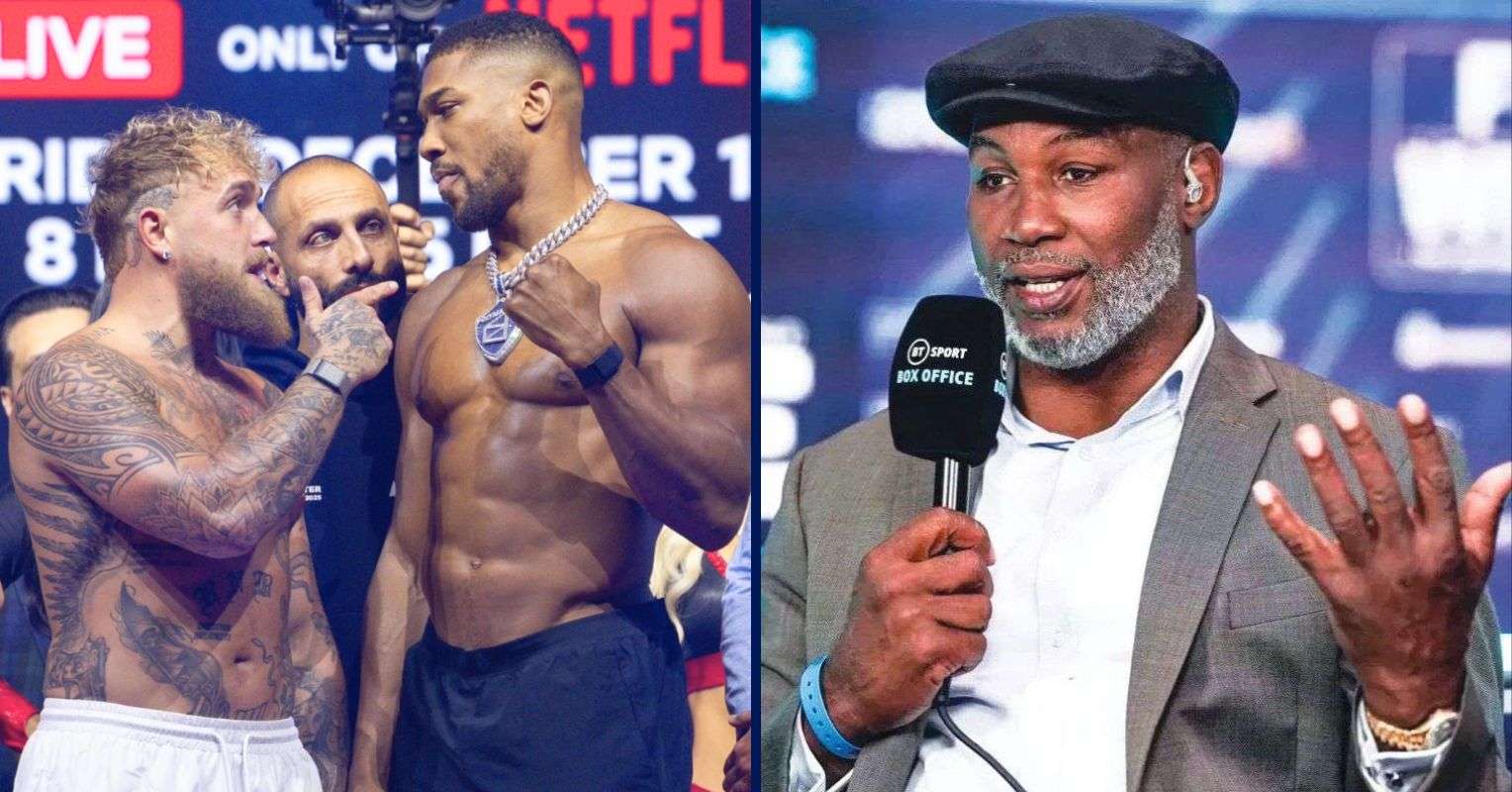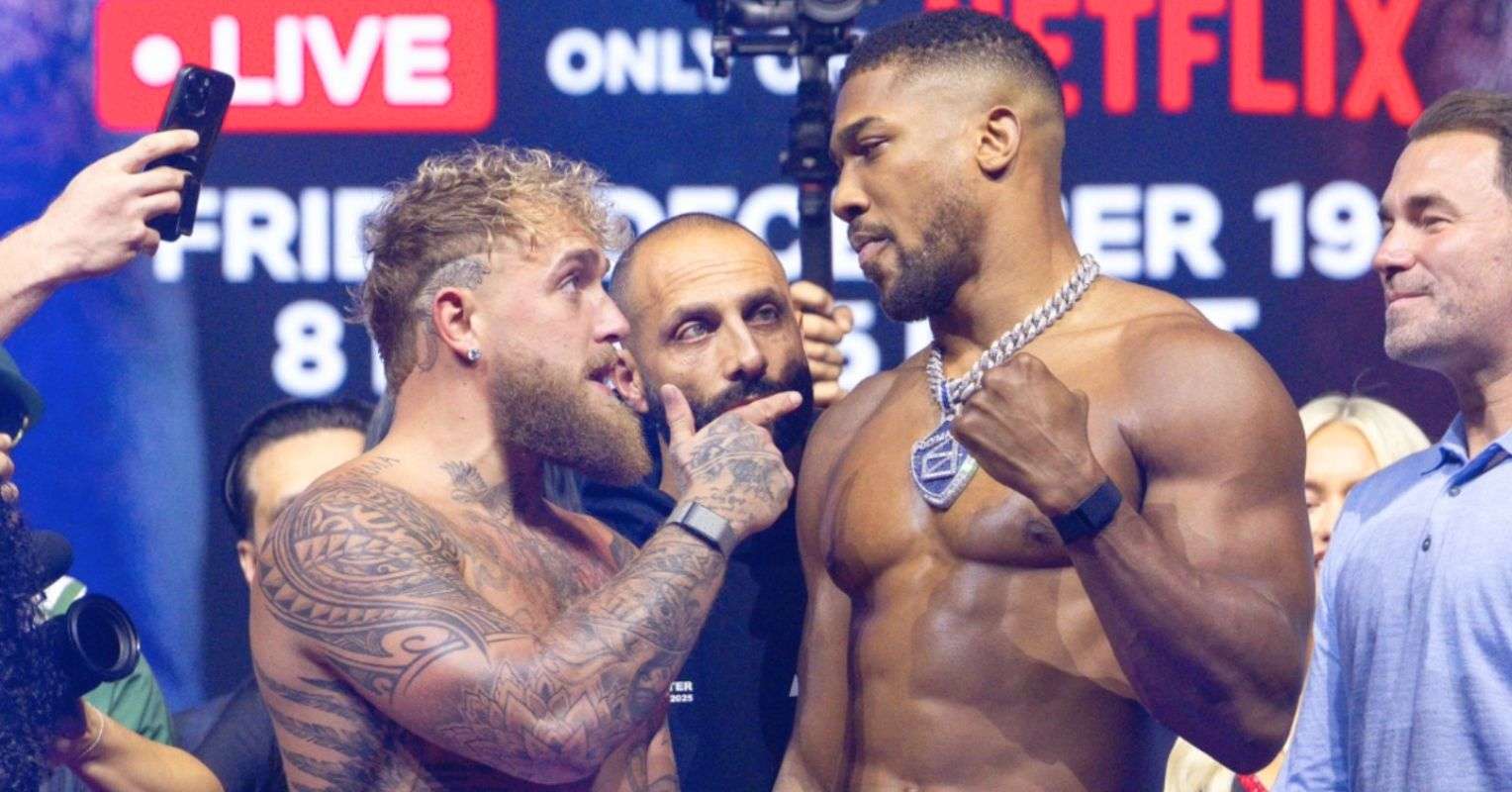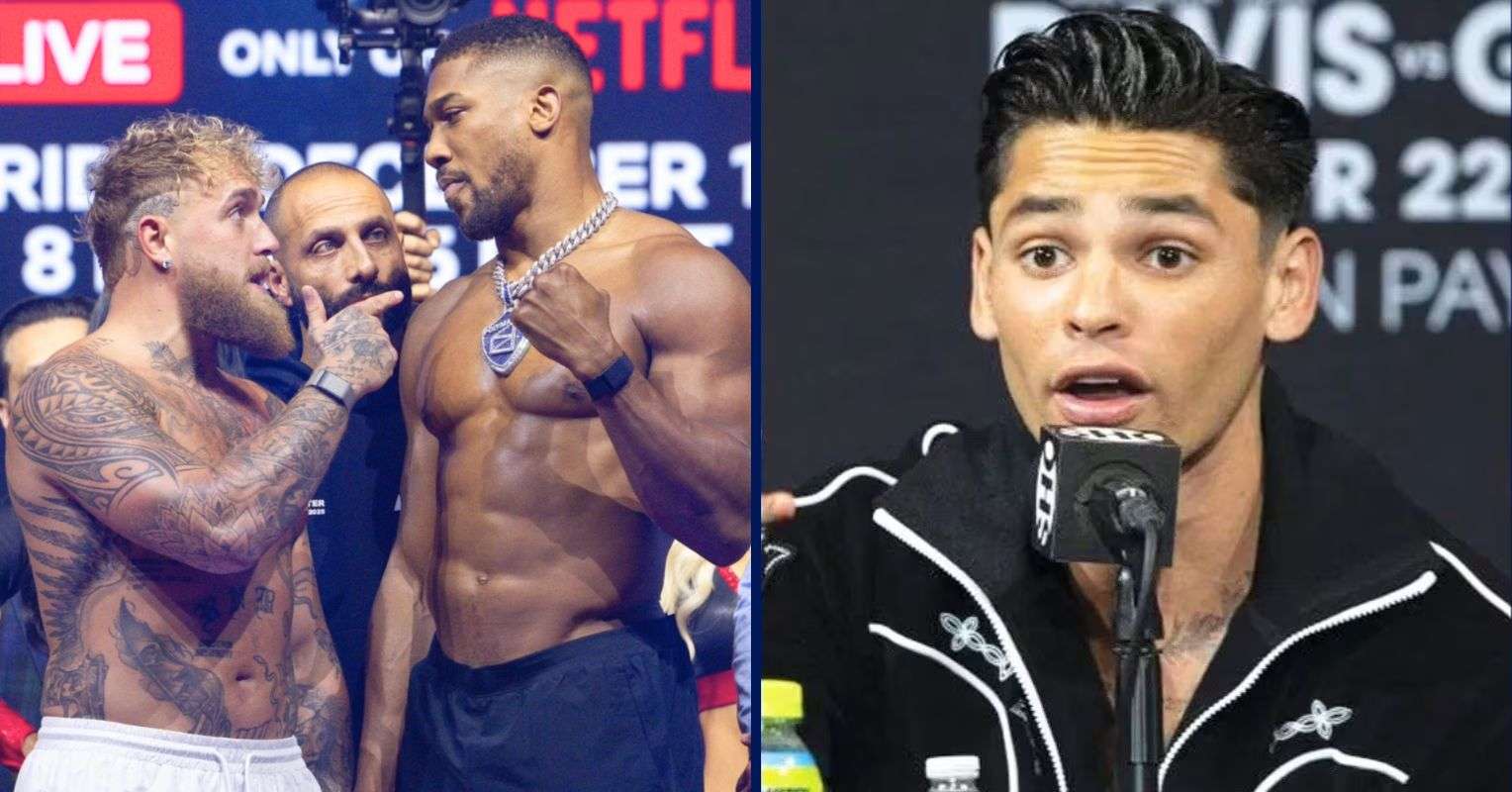December 7 marked the first anniversary of Anthony Joshua joining an exclusive, though rapidly growing, group of heavyweights to regain the heavyweight title. The proliferation of titles is nothing new and this writing is not an effort to further disparage their value. In most cases, we can agree that today the champion makes the title worth something and not the other way around.
As a child learning boxing history, I remember this simple, yet important trivia question: how many men have regained the heavyweight title? Well, Floyd Patterson did it first. Then, there was Muhammad Ali, who won it three times. Oh, oh, oh, and who was the other guy? That’s right, Tim Witherspoon won it twice during the 1980s.
That was it; that was the conversation until 1994. By this time, the WBO had moved up in credibility due to some pretty excellent fighters holding the organisation’s title. With it’s inclusion boxing history stopped including an asterisk next to names like Witherspoon, because it could no longer be denied that times had changed and there was a new world(s) order.
Joshua avenged an embarrassing TKO loss to Andy Ruiz Jr with a comprehensive decision victory to put the belts back around his waist. However, he is not even the most recent fighter to do so. He’s not even the most recent boxer from the United Kingdom, of course, as we saw early in 2020.
In honour of Joshua, who fights Kubrat Pulev this Saturday, and numerous others, here’s an account of the professional boxers to have regained the/a heavyweight championship. You may be surprised how large the crowd has grown and will surely debate the merit of some.
1. Floyd Patterson
Patterson, 55-8-1 (40), was once the youngest man to win the heavyweight championship, but he will always be the first to regain it. The Brooklyn-based boxer became champion with a stoppage of Archie Moore in 1956. Moore had challenged Rocky Marciano the year before and dropped him in round two. When Marciano retired, Moore and Patterson fought to fill the vacancy. About two-and-a-half years later, Ingemar Johansson separated Patterson from his senses and the title in three rounds following seven knockdowns. Yet, Patterson won the rematch almost a year later in 1960. Patterson lost it for good to Sonny Liston in 1962 and failed in bids to get it back against Liston, Ali, and Jimmy Ellis.
2. Muhammad Ali
Part of Ali’s claim to being “The Greatest” was due to his three reigns as heavyweight champion. Ali, 56-5 (37), defeated Sonny Liston in 1964 to ‘shock the world’. Ali lost WBA recognition for signing to rematch Liston. He would get that belt back by defeating Ernie Terrell, but would be stripped of all titles due to his objection to serve in the armed forces during Vietnam. Ali endured a lengthy enforced hiatus, but worked his way back to the title in 1974 with an iconic stoppage of George Foreman. Ali was dethroned by Leon Spinks in 1978, but regained it for the third time about seven months later by avenging the loss. Ali would again retire the following year, but make an ill-advised attempt to unseat Larry Holmes in 1980.
3. Tim Witherspoon
Witherspoon was the odd man out, asterisk of heavyweight trivia for a long time, but his place among two-time heavyweight champions appears completely natural now. Witherspoon, 55-13-1 (38), lost his first bid for the title against Holmes in 1983. The following year, he picked up the vacant WBC belt by outpointing Greg Page, but lost it just five months later to Pinklon Thomas. The Philly fighter rebuilt and won the WBA version on points over Tony Tubbs in 1986. He defended it once against Frank Bruno, but surrendered the title to James “Bonecrusher” Smith in December of the same year. “Terrible” Tim fought on until 2003, but even when he was a serious contender, he never secured another title shot.
4. Evander Holyfield
The former unified cruiserweight champion first became heavyweight champion in 1990 after dismantling James “Buster” Douglas”. Holyfield, 44-10-2 (29), reigned for two years, defending against Foreman, Bert Cooper, and Holmes, before he lost to a young Riddick Bowe in a memorable battle. By 1993, he was champion again by edging Bowe in the famous “Fan-Man” bout. Holyfield was quickly dethroned by Michael Moorer on a close decision in early 1994. Holyfield’s long-sought bout with Mike Tyson finally materialized in 1996 and, by its conclusion, Evander joined Ali as a three-time heavyweight champion. He would beat Tyson and Moorer among others before losing it to Lennox Lewis in a rematch after their controversial draw. Holyfield made further history in 2000 by outpointing John Ruiz for his fourth run as heavyweight champion. He failed to win it a fifth time in his rubber match with Ruiz, or contests against Chris Byrd, Sultan Ibragimov and Nicolay Valuev.
5. Michael Moorer
The one-time Kronk star became a WBO heavyweight titlist shortly after moving up from the light-heavyweight division. In 1992, Moorer climbed off the canvas twice to stop former heavyweight challenger Bert Cooper in five rounds of an absolute corker. Moorer vacated the belt less than a year later and then dethroned Holyfield, again coming off the floor, for WBA and IBF honors. Moorer lost his belts months later in his historic bout with Foreman in 1994. In 1996, Moorer met Axel Schulz, who had controversially failed in two previous title bids, for the vacant IBF strap. Moorer edged Schulz by split decision. Following two lacklustre defenses, Moorer lost his belt in a unification rematch with Holyfield in 1997. Moorer, 52-4-1 (40), toiled around the division until 2007, but never picked up the pieces for another title shot.
6. George Foreman
The 1968 Olympic gold medallist won his first heavyweight championship of the world with a second-round dismantling of Joe Frazier. Foreman, 76-5 (68), reigned for almost two years, which saw an equally impressive KO of Ken Norton in the mix. However, his 1974 showdown with Ali proved his undoing and “Big” George left the ring title-less. He fought until 1977 and then retired for a full decade. His 1987 ring return was met with doubt, but four years later he challenged Evander Holyfield and more than held his own in losing a unanimous decision. In 1993, Foreman tried for the vacant WBO belt against Tommy Morrison and was decisively outboxed over 12. His 1994 title try against Moorer seemed an act of charity and then a gross mismatch. Behind on points, Foreman landed a thunderous one-two and put the lights out on Moorer. Twenty years later, Foreman was a two-time heavyweight champion. He was stripped of the WBA belt for not meeting Tony Tucker soon after. Foreman laboured to a controversial split decision over Schulz and then was stripped for not granting the German a rematch. Foreman fought three more times before ending his career.
7. Riddick Bowe
Bowe’s big night came in 1992 when he fought a memorable war with Holyfield to win his first belts (WBC, WBA and IBF) by unanimous decision. The WBC championship was vacated in lieu of meeting Lennox Lewis. Following shameful defences over Michael Dokes and Jesse Ferguson, Bowe was edged by Holyfield in the 1993 rematch. Bowe stayed in the mix and stopped Herbie Hide in six rounds for the WBO belt in 1995. Bowe defended the belt once over Jorge Luis Gonzalez and then settled matters with Holyfield in what ended up being a non-title affair. Bowe was stripped for signing to fight Andrew Golota instead of Alexander Zolkin. Bowe, 43-1 (33), never lost in the ring after his 1993 rematch with Holyfield, but he lost his physical prime in two brutal beatings administered by Golota in spite of winning both by disqualification. Several ‘comebacks’ followed over the next twelve years.
8. Mike Tyson
“Iron” Mike, 50-6 (44), unseated Floyd Patterson as the youngest heavyweight champion in boxing history and still holds that distinction today. In 1986, Tyson demolished Trevor Berbick in two rounds to win his first strap. He went on to unify three titles with victories over Smith and Tucker by mid-1987. After nine defences, which included seven past or future champions like Smith, Tucker, Holmes, Michael Spinks and Bruno, his reign ended with a huge upset to Douglas in Tokyo. Tyson rebuilt with victories over Alex Stewart and Razor Ruddock, but saw his return delayed by a three-year prison stint. Come 1996, Tyson began unifying the division again in a rematch with Bruno then a crushing of Bruce Seldon. It all came crashing back down though as he lost his mega-fight with Holyfield late in the year and the rematch in 1997. Outside of suspensions, Tyson remained a fixture in the division due to his popularity and found himself trying for Lewis’ belt in 2002. Tyson fought once a year until 2005, but lost more and more status in the division. However, in 2020, Tyson, now 54 years old, has ‘returned’ with an exhibition performance against Roy Jones Jr.
9. Lennox Lewis
In 1992, Lewis became the first British heavyweight champion since Bob Fitzsimmons in 1897. He is also the first British boxer to regain this title. Lewis became champion following his destruction of Ruddock in two rounds of a title eliminator. Bowe opted to trash his WBC title rather than face Lewis, so Lennox was named champion on the strength of his recent performance. He notched three defences, over Tucker, Bruno and Phil Jackson, before Oliver McCall stopped him in two rounds in their 1994 bout. Under Emanuel Steward, Lewis went on an impressive run, defeating top contenders Lionel Butler, Morrison and Ray Mercer. He stopped Oliver McCall amid the latter’s nervous breakdown in five rounds of their 1997 rematch. Nine further defences followed, including a pair of unification bouts with Holyfield and meeting numerous unbeaten or top contenders. Hasim Rahman caught a complacent Lewis off-guard in South Africa and ended his reign in five rounds. Lewis won the rematch in resounding fashion to become a three-time heavyweight champion. Lewis avenged all three blemishes on his record. Lewis, 41-2-1 (32), retired after defending against Tyson and Vitali Klitschko.
10. Herbie Hide
Even I forgot this one! Hide, 49-4 (43), won his first crack at the WBO heavyweight title in 1994 when he stopped Michael Bentt in seven rounds. A year later, Bowe took Hide’s belt in six rounds before he could notch a successful defence. In 1997, Hide met Tucker for the now-vacant WBO title and made good again, dispatching the former titlist in two rounds. Hide managed two defences this time around before he ran into Vitali Klitschko in 1997 and surrendered the belt in two rounds. The Briton fought on until 2010, often as a cruiserweight, but never tried for the heavyweight title again.
11. Chris Byrd
The Flint, Michigan-born Byrd first won a heavyweight title in 2000, having barely won a round against Vitali Klitschko. However, Byrd was still standing when the champion’s shoulder failed him and Vitali surrendered on his stool after nine rounds. Six months later, Wladimir Klitschko gained family revenge with a wide decision victory over Byrd. Byrd rebounded, beating David Tua among others, and landed a bout with Holyfield for the vacant IBF version. Byrd walked away with a decision victory. Three controversial wins followed over Fres Oquendo, Andrew Golota and Jameel McCline. Byrd waltzed past DaVarryl Williamson for his final defence before again losing to Wladimir, this time in seven rounds. Byrd, 41-5-1 (22), fought on, but eventually retreated to the light-heavyweight and cruiserweight divisions without much success.
12. John Ruiz
“The Quiet Man” gets so little love, but he was a prominent factor in the division for a relatively long time. By 1996, Ruiz was almost written off following losses to fellow prospects Sergey Kobazev, Dannell Nicholson and Tua. However, he managed a credible win-streak that led to a shot at Holyfield in 2000. Ruiz lost by controversial scores. He made good in the rematch in 2001 and also kept the title with a draw later that year in the rubber match. Ruiz lost to then-light-heavyweight champion Roy Jones Jr in a high-profile 2003 bout, but Jones did not remain in the division. Before the year was out, Ruiz regained the title by outpointing Rahman. He defended against Oquendo and Golota before losing to James Toney in 2005. However, that defeat was overturned due to Toney’s failed drug test. Nevertheless, Nicolay Valuev outpointed Ruiz the same year. Ruiz, 44-9-1 (30), fought on, losing a rematch to Valuev and a WBA challenge to David Haye in 2008 and 2010, respectively.
13. Vitali Klitschko
“Dr. Ironfist” ended Hide’s brief WBO reign in 1999 with a second-round KO. Vitali was well on his way to a third successful title defence in 2000 when he sustained a shoulder injury against Byrd and lost the title after remaining on his stool after the ninth. As arguably the greatest late substitute for a heavyweight title, Vitali stepped in for Kirk Johnson to meet Lennox Lewis. In a modern classic, Lewis prevailed after opening a horrific gash over one of the Ukrainian’s eyes. The stoppage came in the sixth. Klitschko stopped Johnson in a title eliminator and earned the right to face Corrie Sanders for the vacant belt once Lewis had retired. Vitali stopped Sanders in eight rounds. He defended only once against Danny Williams before retiring due to injury in 2004. Nearly four years later, Vitali returned to the ring without a tune-up and stopped Samuel Peter to reclaim the WBC belt. Nine defences followed that 2008 victory and Klitschko retired for good in 2012. He has been Mayor of Kiev for the last six years.
14. Hasim Rahman
“The Rock” failed in two big showdowns with fellow contenders Oleg Maskaev and Tua prior to 2001. He had little backing going into his heavyweight title clash with Lewis. Yet, he stopped the champ in five rounds. He didn’t keep it long and passed it back to Lewis after a highlight-reel KO defeat in four rounds. Two years passed without a victory for Rahman. In 2005, Rahman outpointed Monte Barrett for the interim version of the WBC. Rahman was upgraded to full champion and kept the title with a 2006 draw versus James Toney. Old rival Maskaev again stopped Rahman to take his belt later that year. In 2008, Rahman challenged Wladimir Klitschko for the titles, but was a skeleton of his former self by that time. Alexander Povetkin stopped him in two rounds of a WBA title bout in 2012. Rahman, 50-9-2 (41), fought only once more.
15. Wladimir Klitschko
“Dr. Steelhammer” captured the WBO title in 2000 for his first reign. He claimed considerable status as the heir apparent to Lewis as he began knocking over fringe and faded contenders. He was surprised in two rounds by Sanders and left in a heap in just two rounds in 2003. He tried to get his belt back, but found himself on the wrong end of a KO punch after five rounds with Lamon Brewster. Now deemed a soft touch after three stoppage losses, Wlad went through hell and back to win the narrowest of decisions over Peter. Klitschko rose from the canvas three times, but deserved the verdict. The victory earned him a 2006 shot at a friendly face and a repeat victory over Byrd made him a two-time champion. Now the IBF ruler, Wlad beat contenders, avenged defeats and started to unify. A win over Sultan Ibragimov brought the WBO belt back to his trophy case. After nine title defences, including good wins over Tony Thompson, Ruslan Chagaev and Eddie Chambers, Wlad met WBA ruler Haye for another unification bout. Haye proved to be another easy victory and the Ukrainian marched on, beating the European opposition of the time. In 2015, Wladimir lost his belts to Tyson Fury in one of the most mundane bouts in heavyweight title history. In 2017, Klitschko made his last hurrah and gave Anthony Joshua a real go in one of the more entertaining heavyweight title contests of the century. A rematch loomed, but the Ukrainian opted to retire.
16. Nikolai Valuev
“The Russian Giant” was viewed by many as his generation’s Primo Carnera. However, Valuev was surprisingly effective and athletic for a seven-foot boxer. He built a résumé full of decent American and European foes and pushed his best opponents at the top to close fights. He won an eliminator with Larry Donald to get a crack at Ruiz for the WBA belt. Valuev won a narrow decision with room for debate. He managed three defences including against Barrett and McCline, but was outworked by Chagaev in a difficult fight to score. More creditable victories followed, including another tight win over Ruiz for his second berth as WBA champion. Holyfield appeared to outwork the giant, but was unlucky on the cards. Haye ended Valuev’s reign with a deserved decision win. Valuev called it a day at 50-2 (34).
17. Anthony Joshua
Here we are back in the modern day. Joshua rose through the ranks from prospect to contender by adding the ghosts of British heavyweights past to his résumé, such as Matt Skelton and Michael Sprott, but he really took a leap ahead when he stopped then-fellow prospect Dillian Whyte in seven rounds. He then leapt into a world title fight and stopped Charles Martin in two rounds to bring the IBF belt home to Watford. Joshua stopped a pair of American plodders in Dominic Breazeale and Eric Molina before surviving his shootout with Wladimir Klitschko. From that triumph, he was awarded the vacant WBA belt left behind by Tyson Fury during his self-imposed hiatus. Joshua truly firmed up his hold on the heavyweight ‘crown’ by adding wins over Carlos Takam, Joseph Parker and Alexander Povetkin. The Parker win was a unification which brought him WBO honours. The table was set for something big, but Andy Ruiz Jr turned in the performance of a lifetime as a substitute and stopped Joshua in seven rounds. The fat boy topped the Adonis that night, but didn’t fight with the same fervour in the rematch. Joshua also took a different approach and boxed from the outside to capture victory and the right to be called two-time champion. That was one year ago and Joshua now looks to defend against Kubrat Pulev on Saturday. Joshua stands at 23-1 (21).
18. Tyson Fury
Fury became the first world heavyweight champion from Britain in over a decade or since Lennox Lewis retired, when he bored us all to tears in decisioning Wladimir Klitschko in 2015. Nevertheless, the win was monumental if not memorable. Fury would prove to be an enigma though and, instead of capitalising on the magnitude of the victory, he disappeared. Instead of learning more about Fury’s fistic prowess, we were exposed to a far more powerful human struggle of a man at war with himself. After nearly three years, Fury mounted the unlikeliest of comebacks and inspired millions, even though his first two performances were far from A-plus. Fury gave Deontay Wilder all he could handle and more in their 2018 draw which the majority felt should have seen “The Gypsy King” crowned champion a second time, even with two knockdowns against him. In the interim, Fury hardly impressed with victories over Tom Schwarz and Otto Walin. Even still, when all the chips were down in the Wilder rematch, Fury delivered a career-best performance to take the WBC belt by seventh-round TKO. Only Fury, 30-0-1 (21), knows what lay ahead but boxing fans can be assured of one thing: they can expect the unexpected.
The number of heavyweights regaining the championship has accelerated rapidly since the mid-nineties. In the current state of the game, numerous former champions still loom as likely title contenders. Andy Ruiz, although disappointing last time out, still possesses the fastest and most skilled hands in the division. Joseph Parker has fallen down a notch, but is rebuilding. Alexander Povetkin, although older, shocked us all when he pulled victory out of the fire against Dillian Whyte. Even Charles Martin is riding an impressive victory and a healthy ranking. If he can get his head on straight, Deontay Wilder cannot be written off. Chances are one or two of these guys will reign again.




